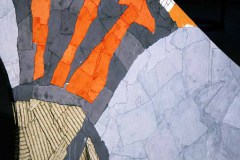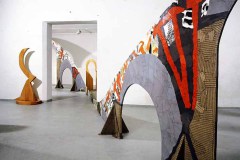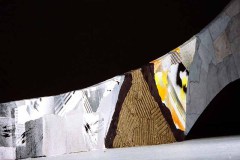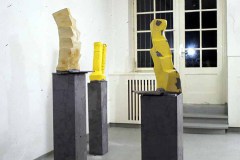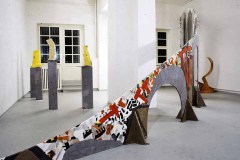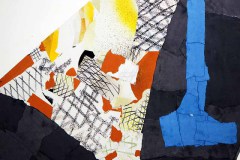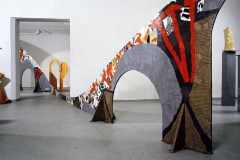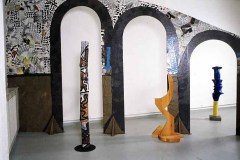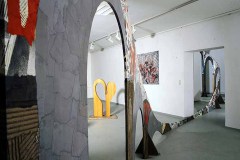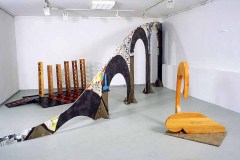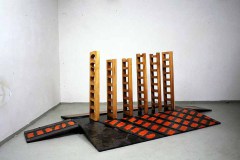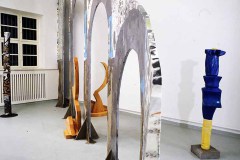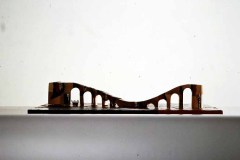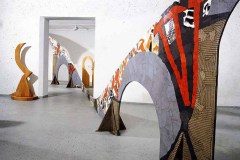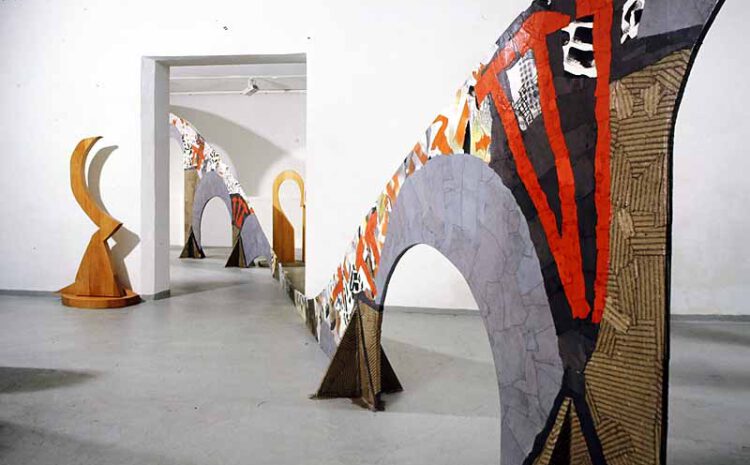
viaduct
The viaduct describes the cultural space as a landscape. It draws its bows as a carrier of signs like a river. It reminds me that I know the limitation. It is exciting because it goes down on its knees as if trapped, yet disappears into the corner from which it emerged. When I think of bridges, the abysses come to mind. The viaduct describes the cultural space as a landscape.
“H Ä M M E R N” by Bernhard Waldenfels
“To be unable to think with one’s hands is to lose part of one’s normal and phylogenetically human thinking.” (Andre Leroi-Gourhan: Hand and Word)
Hammering seems to be something crude and laborious that comes from the “crude beginnings” of mankind. The hand carries out what the mind conceives. The body serves as a henchman until, in the end, machines replace it and hammer and think for it – just like the tripods of the smith god Hephaistos, which already “appeared of their own accord to the assembly of the gods” in Homer. The hammer a tool on call? The hand a dying organ, of which only the index finger remains at the end, which operates buttons? Is the recourse of the hand the price we have to pay for the process of technology?
Modern art, which has long since acknowledged the precursors of an “art brut,” teaches us to distrust talk of “raw beginnings.” The red and blue hammers that appear on Nele Ströbel’s VIADUKT can be read like watermarks in the paper.
Hammering is not a random sequence of beats, but a rhythm of repetitive beats, comparable to the pulse beat, the pendulum beat of the clock, the rhythm of dance and music. It is let into the manifold movement of life. – Hammering is not a blind movement, but one that seeks its target, circles around it and, if it is lucky, hits the nail on the head right away. – Hammering is not a sheer feat of strength, but a scanning of the material, reckoning with its strengths and weaknesses, using chisel and wedge to break the material’s resistance, penetrate its crevices, wrest a shape from it. The processing of the material teaches us the resistance of things, which more easily escapes the airy distant vision of the eye. – Hammering is not a one-sided mastery, but an interplay of forces between hand and tool . The momentum of the hammer already shows a certain inherent motion, which only intensifies and becomes independent in mechanical devices such as pneumatic hammers or ironworks. From the beginning, man is not fused with his tools like the woodpecker with its tapping beak. The keystrokes always run over an artificial keyboard , as with the strokes on the fortepiano.
At the threshold between nature and culture, which is just as irrevocable, both the inventions of technology and the form games of art escape. There also spring claims of experience to which we have to respond, whether we like it or not. The unilateral disposal of nature in us and outside us is only one kind of answer , namely a violent one. With archaically alienated gestures and ironically broken techniques, the art breaks through the appearance of an infinitely increasing progress. which follows only the im peratives of self-preservation. “Touching such idols with a hammer like a tuning fork and listening where it sounds hollow is one of the effects of an art that is not content to aesthetically duplicate technical processes, but elicits a surplus of experience from them:
Mountains rise, spaces separate, water changes its course …
Bernhard Waldenfels


